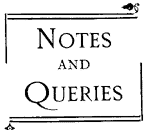 CORN.
— Probably the first species of corn introduced into Mann was
oats, the general term for which is corkey ; but when in ear,
and until threshed, it is called plaggad. When it has been threshed
and winnowed, it is termed sheel.
CORN.
— Probably the first species of corn introduced into Mann was
oats, the general term for which is corkey ; but when in ear,
and until threshed, it is called plaggad. When it has been threshed
and winnowed, it is termed sheel.[From ManxNoteBook vol i,1885]
 CORN.
— Probably the first species of corn introduced into Mann was
oats, the general term for which is corkey ; but when in ear,
and until threshed, it is called plaggad. When it has been threshed
and winnowed, it is termed sheel.
CORN.
— Probably the first species of corn introduced into Mann was
oats, the general term for which is corkey ; but when in ear,
and until threshed, it is called plaggad. When it has been threshed
and winnowed, it is termed sheel.
The threshing was performed with a flail — soost. This implement was composed of two stout and straight branches fastened together by a thong of hide. The portion held in the hands was called laucraghyn, and the head, or part which beat the corn, slatt-hoost. The winnowing was effected by means of a sieve, creer, in the open air — geay asnee. Straw taken from the flail without being broken, and termed gloyee, was turned into rope — suggane. The corn, when required for use, was ground in a braain, or granite quern. According to Dr. Kelly the grinding of corn in a quern was a slavish occupation. Thus he gives brain= "a handmill or quern, from broo = to bruise;" brainagh", the house in which the slave ground the corn with a handmill the slave who worked the handmill;" brainaght="the art or business of the mullar; slavery ; the verb brainey, 'to grind with a handmill, to work as a slave." When ground, the meal was converted into cakes, berreenyn, and baked upon a losh, or baking stone, a circular flag placed over a peat fire. The last cake thus baked was usually thicker and more substantial than any of the others and was termed soddag-verreen. J. M. J.
OUR ANTIQUARIAN REMAINS — A SUGGESTION.As I understand that a Bill will shortly be placed before the Tynwald Court, providing for the appointment of Trustees to receive and have charge of all such objects as are deserving of a place in a Manx Museum, we may perhaps regard ourselves as being within measurable distance of obtaining that much needed institution. There is still, however, a want which would not be met by such an Act, namely the preservation of Antiquarian remains which, by their nature cannot be placed within the walls of a Museum. Would it not be advisable to form an association having for its object, not only the protection, but also the methodical investigation and registration of such antiquities ?
P. M. C. K.
CHARLOTTE DE LA TREMOUILLE, COUNTESS OF DERBY. — The following extract from a paper called , The Newes, published for the satisfaction and information of the people, with Privilege,"* may be of interest : — "Chester, March 26th, upon Monday last, the Lady Dowager of Derby deceased; a person eminent both for virtue and extraction, and not less for her constancy of mind in all conditions, and for those generous actions against the usurpers, in the late times of Rebellion, that were performed by the assistant influence of her directions." M.
EPIGRAM, DATED 1646. — James, the seventh Earl of Derby, took away the Calf of Mann from Richard Stevenson, and deprived William Christian, the Receiver-General, of the Custom of the Corna Mills. Shortly afterwards they both invited his lordship to a banquet, which gave rise to the following epigram; —
"Will did invite his guests ; they ate their fills
He gave them bread that robb'd his father's mills,
But was not Dick the madder man by half,
Who gave him Veal that stole away his Calf?"
H.
SPOLIATION OF PEEL CATHEDRAL. — Bishop Wilson had a note in his copy of "Spelman's History of Sacrilege " to the following effect: — " Anno. 1733, Governor Horton removed the roof of my Cathedral at Peel to Castletown, to be placed on his stables. How this will end I know not! " In a subsequent note he says "I have seen how it ended. For the wherrey that bore away the Timber was lost on her next voyage, and the Governor's son nearly lost his sight in the small pox." It should be mentioned that Bishop Wilson had used the lead of the Cathedral for roofing the Church of St. Patrick some twenty years before this, so that he was not altogether without some share in this spoliation.
MONKBARNS.
*This Newspaper was published on the 31st of March, 1664.

|
|
||
|
|
||
|
Any comments, errors or omissions
gratefully received The
Editor |
||